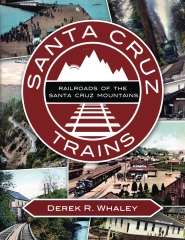

The Baldwin Styles
The Colour & Architecture of US Locomotives
By David Fletcher.
Introduction | Part 1: Origins | Part 2: Baroque Revival | Part 3: Development of Standards | Part 4: Case Studies
Part II - The Baroque Revival
T hrough the latter part of the 1860's to mid-1870's, the Baldwin Locomotive Works preferred, as did most eastern builders, the Baroque revival styles, combining original classical form, classical cab design and the ringed sand box orders. But, they also took on the silliness of the Neo-Baroque of the day - the mixing of many cultural elements into a single decorative style. Examples of extreme Neo-Baroque architecture of the 1870's include such examples as the Paris Opera and the Giza Palace (where the original museum of Egyptian antiquity was set up). The interior designer of both, Gaetano Lodi, promoted the over-the-top nature of Neo-Baroque decoration to the highest effect, mixing Oriental, Egyptian, and near eastern colour and decoration into the design. Baldwin locomotives of the early 1870s saw the use of classically inspired linework on tender sides, arabesque to dome sides, and possibly Egyptian inspired motifs to the dome tops. |
| Baroque revival inspired the mixed decorative approach on Baldwin locomotives of the early 1870s, including the 1871 'Shou-wa-no' of the D&RG. |
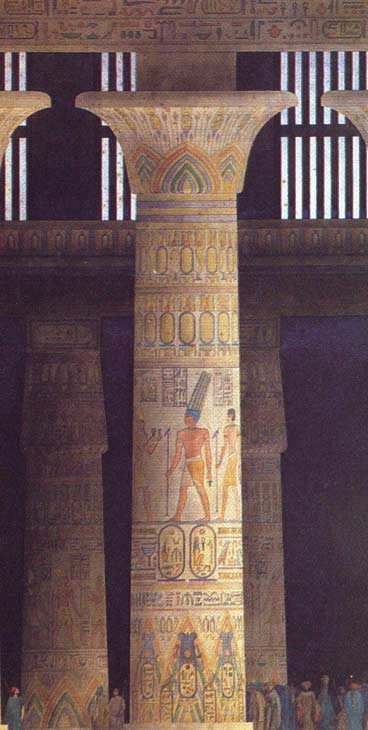 |
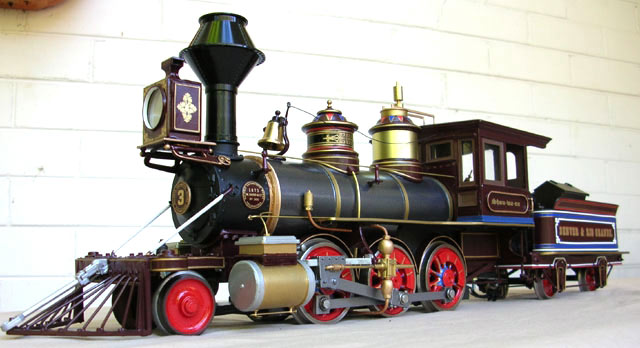 |
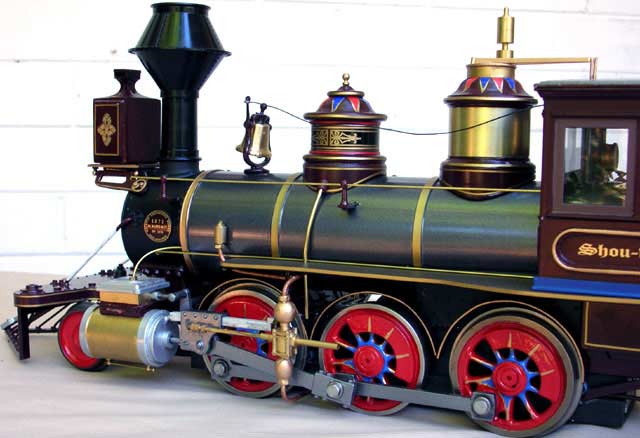 |
By the mid-1870's, fewer major colours were used, and gold leaf 3D painted baroque decoration had been reduced to painted 2D geometric patterns inspired by the exotic art of the near and middle east. The geometric patterns were of Moorish basis, known as arabesque - stylised leaf and flower patterns in the traditions of Islamic art and common in Neo-Baroque decoration.
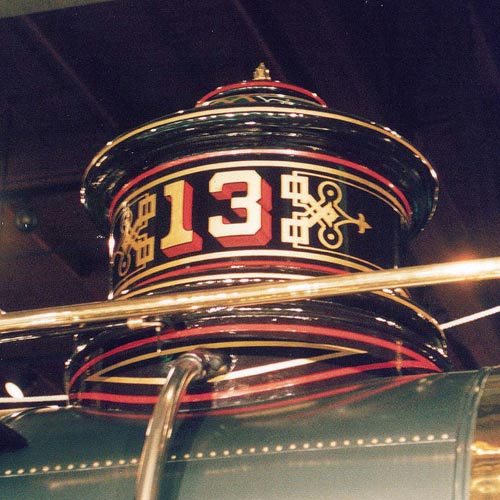 |
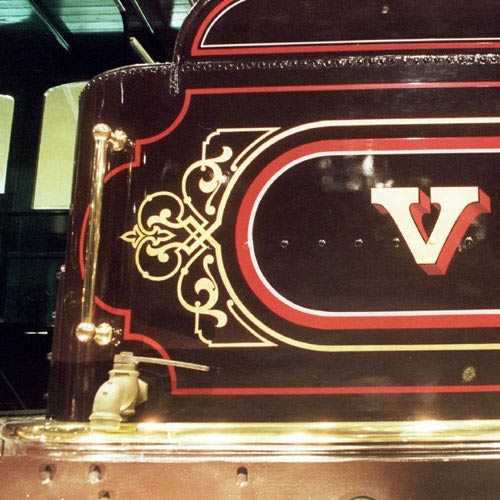 |
||
| Baldwin arabesque from 1873, dome sides, and tender recreated on Virginia & Truckee #13 'Empire' at the California State Railroad Museum. | |||
 |
|||
 |
|||
Like the decades before, the use of bright red (Vermillion - an orange red colour) was still used to highlight the wheel disks. Relative to the deep tones of the superstructure, the brightly painted wheels were a celebration of movement and motion - the locomotive's most emotional asset.
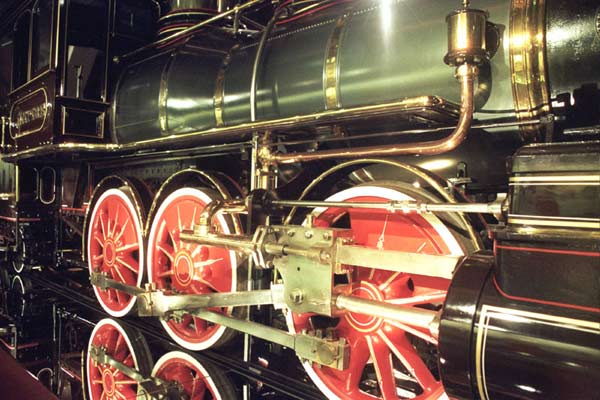 |
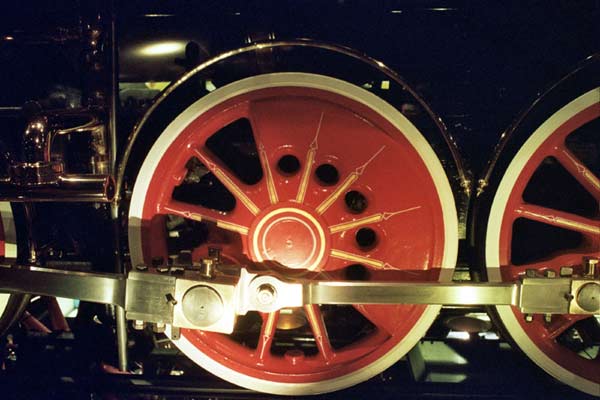 |
| The gilding on the wheel centers shimmers while in motion. | |
Examples of Arabesques. |
||
 |
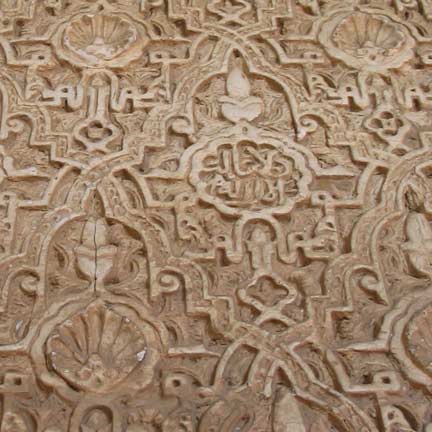 |
 |
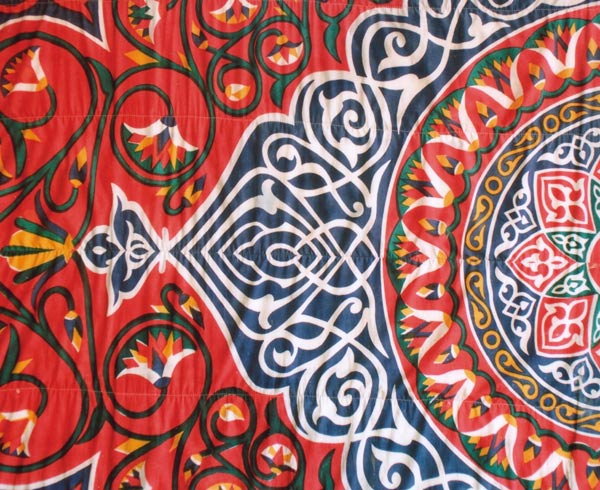 |
| A modern day Islamic wall hanging photographed in Jordan 2008. Note the extensive arabesque is very close to the Baldwin Style 1 tender design, plus note the lotus flower detail in the outer design inspired by Egyptian culture. |
 |
The Moorish influence was popular in western culture of the 1870s, influencing decorative detail in Neo-Baroque design, as well as pop culture. King Ludwig of Bavaria brought two pavilions to his Linderhof palace in the Bavarian Alps: The first was the 'Moorish Kiosk', designed by Berlin Architect Karl Von Diebitsch for the 1867 International Exhibition in Paris, later purchased by the railroad baron, Bethel Henry Stromberg, later bought by Ludwig and moved to his palace grounds. The 2nd pavilion was the Moroccan house built for the 1873 Vienna Exhibition which Ludwig purchased in 1878 and is today restored on the grounds of Linderhof Palace. This window detail from the Moroccan house indicates the delicate arabesque applied to the pavilion, and so very close to the Baldwin tender arabesque of the mid 1870s.
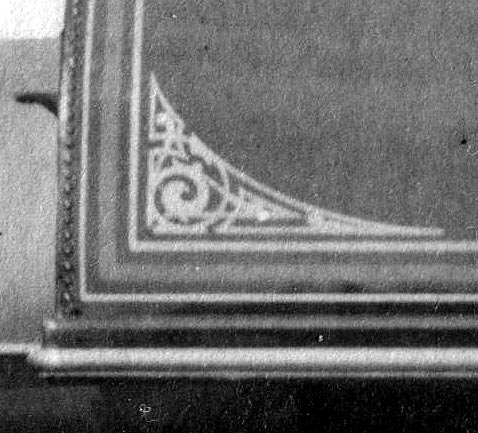 |
| Below, arabesque applied to an 1871 Baldwin saddle tank loco, on the tank corners. |
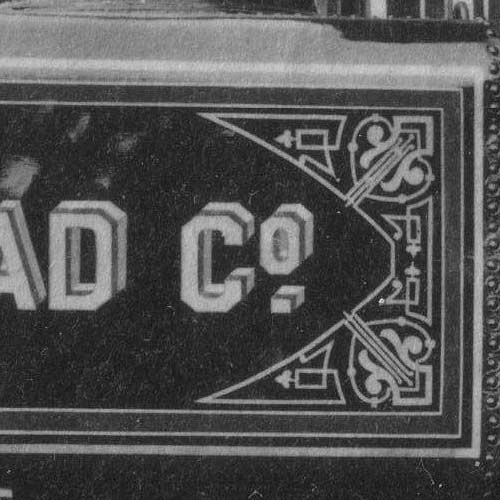 |
| Below, arabesque applied to an 1872 Baldwin side tank loco, on the tank corners. |
William Mason had also moved to simple geometric patterns, stylized leaf and plant patterns along with simple horizontal lines. Where Baldwin's decoration was inspired by Near Eastern influences and Moorish design, Mason took on the popular decorative styles inspired by Charles Eastlake. Eastlake design had become popular in the US through the 1870s, mostly known for his simply decorated carved wooden furniture. Eastlake was a British Architect, who found fame in furniture design and carved wooden elements. The simple geometric patterns of Eastlake became popular and evolved into many forms of American art, extending to timber decoration in US houses, and even as far as Mason's locomotives! Eastlake's intent had been very much in line with the Arts and Crafts movement of the day- an artistic reaction to the excesses of the Industrial world, and a desire to return to the simple hand made living of generations before.
 |
 |
Simple Eastlake geometric designs in wooden furniture, stylized plants and flowers, not unlike the Moorish arabesque. |
|
 |
|
| Eastlake design covers this 1875 0-4-4T Mason Bogie. | |
 |
|
| William Mason's Bogie locomotive for the 1876 Centennial Exhibition in Philadelphia, also extensively decorated in Eastlake design. | |
 |
|
| The two examples above tend to be the exception, usually for special exhibit or catalogue photo. The vast number of William Mason locomotives of the 1870s were far more simply lined, with simple Eastlake corners to the tender corners and simple design to the dome sides. | |
The New Jersey builders, such as Rogers and Danforth Cooke based their locomotive styling on Renaissance Revival styles, including their sand box form, cab design and so on. The locomotive elements were still classically inspired, but with the Renaissance influence. Danforth move away from this in the early 1870s, while Rogers maintained the Renaissance styling well into the late 1870s.
 |
| Typical Renaissance revival window - 1869 Melbourne, Australia. |
 |
| Renaissance revival elements on typical Rogers locomotive - 1876. |
Please use the navigation links below to continue to the next section.
Introduction | Part 1: Origins | Part 2: Baroque Revival | Part 3: Development of Standards | Part 4: Case Studies



